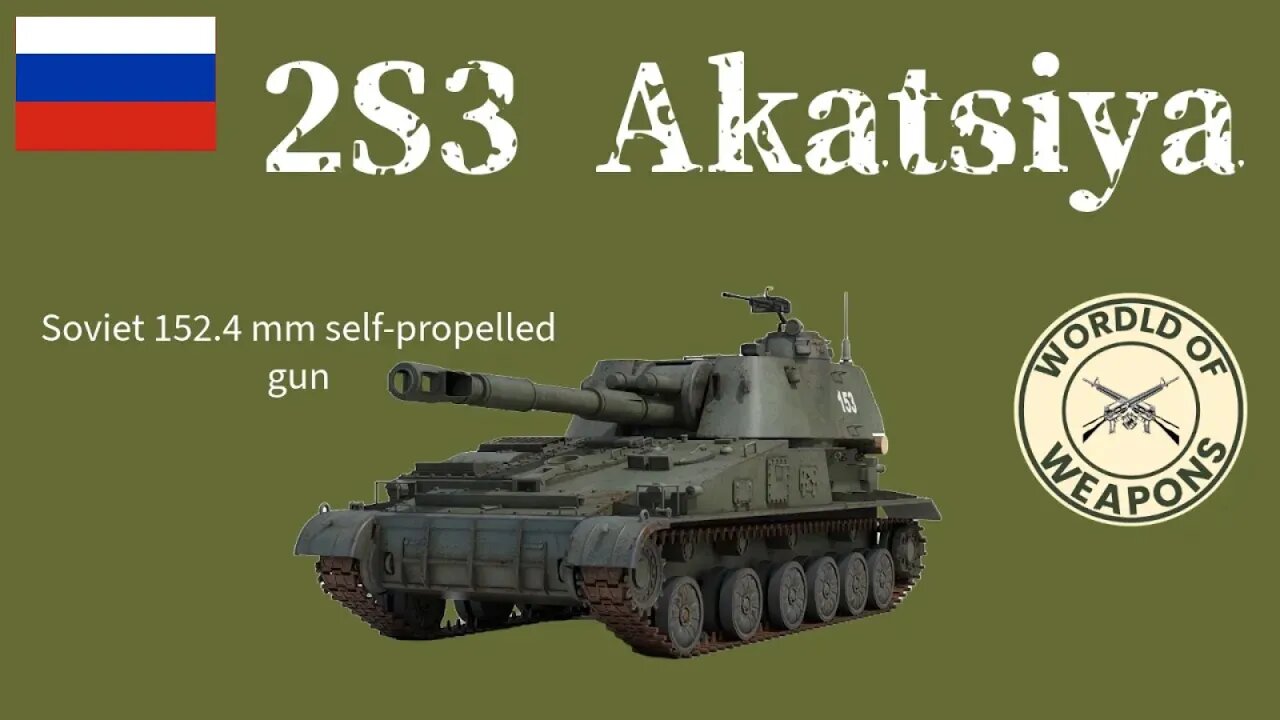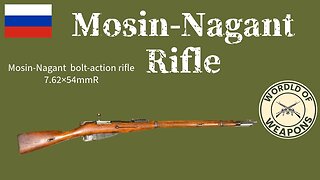Premium Only Content

2S3 Akatsiya 🇷🇺 Russian firepower and mobility on the battlefield
2S3 Akatsiya 152.4 mm self-propelled gun
1.Introducction 00:00
2.Description 00:48
3.Armament 02:14
4.Maneuverability 04:08
5.Series production 05:04
The SO-152 (Russian: СО-152), usually known by its GRAU designation 2S3 (Russian: 2С3), is a Soviet 152.4 mm self-propelled gun developed in 1968, as a response to the American 155 mm M109 howitzer. Development began in 1967, according to the Resolution of the Council of Ministers of the Soviet Union from July 4, 1967. In 1968, the SO-152 was completed and in 1971 entered service. The fighting vehicle also received the added designation Akatsiya (Акация), which is Russian for Acacia.
Description:
The 2S3 Akatsiya is armed with a 152.4 mm howitzer based on the Soviet 152.4 mm D-20 howitzer. The artillery system was developed at the design bureau No. 9 of Sverdlovsk. The factory designation of the howitzer is D-22 and the GRAU designation, 2A33. The chassis was developed by Uraltransmash.
The driver's and engine-transmission compartments are in the front part of a hull, the fighting compartment with rotatory turret in middle and rear parts of the hull. The armor is welded rolled steel. The SPG is equipped with an R-123 radio set, an R-124 intercom, an automatic CBRN defense system with filtration unit and fire-fighting equipment. The V-59 12-cylinder four-stroke water-cooled diesel engine connects to a mechanical two-speed transmission. The gear box is combined into one block with a planetary steering gear. The 2S3 has self-entrenching equipment which allows it to prepare a trench within 20 to 40 min.
The crew consists of 4 to 6 men: a driver, a gunner, a loader, a commander, and two ammunition bearers, which are positioned to the rear of the vehicle feeding rounds through two hatches in the hull rear when in masked firing position.
Armament:
The 152.4 mm L/27 howitzer D-22 (2A33) can elevate from −4° to +60° with a turret traverse of a full 360°. Rate of fire is 2.6 – 3.5 rounds/min depending on firing conditions. The howitzer is equipped with a double-baffle muzzle brake, a semi-automatic vertical wedge breechblock and an ejector. The 2S3 has a periscopic sight for laying the howitzer, and telescopic sight for engaging targets with direct fire. The howitzer has separate type of loading with ammunition (35 rounds, later raised to up to 46) arranged in two mechanized stowages (in the turret and in the hull rear). The Akatsiya can fire OF-540 and OF-25 high-explosive fragmenting (HE-Frag) 43.56 kg projectiles (also all types of rounds developed for 152.4 mm towed howitzer-guns ML-20 and D-20, and for towed howitzer D-1) at a maximum range of 18.5 km depending on used charge or rocket-assisted projectiles (RAP) to a maximum of 24 km. Other projectiles include BP-540 high-explosive anti-tank (HEAT-FS) with sight distance of 3 km and 250 mm armor penetration, Br-540B and Br-540 armour-piercing ammunition (AP-T) with 115–120 mm armor penetration at a 1000 m, OF-38 Krasnopol laser-guided rocket-assisted projectiles, S1 illuminating, ZH3 smoke, nuclear (explosive yield of 2 kilotons). Secondary armament consists of a remotely controlled 7.62 mm PK machine gun tank (PKT) on commander's cupola for close range anti-aircraft and self defence.
Maneuverability:
The Akatsiya chassis Objekt 303 is based on that of the Object 123 tracked chassis of the 2K11 Krug surface-to-air missile system; it includes six (rather than seven as in the 2K11 Krug) twin rubber-tired road wheels, four rubber-tired return rollers (two single and two twin), front drive sprocket with detachable sprocket rings (lantern-wheel gear) and idler wheel per side. The track is 14.375 m long, 482 mm wide and has 115 links. The Akatsiya can cross 0.7 m high vertical obstacles, 3.0 m wide trenches, 1.05 m fording depth and climb 30° gradients. It can be transported by the cargo aircraft An-22, which can carry two self-propelled howitzers of this type.
Series production:
Two prototypes were built in the end of 1968. Factory tests finished in October 1969, and discovered strong gas contamination of the fighting compartment during intensive gunnery, especially during the use of small charges. As a result, army inspectors did not accept four SO-152s built in summer 1969 for ground tests. The problem of gas contamination was solved, allowing the SO-152 to enter service of the Soviet Army in 1971. The first three serial 2S3s were built by Uraltransmash in the end of 1970, and in 1971 nine were produced. The works received an order for 70 2S3 in 1973. The mass production finished in 1993.
-
 5:00
5:00
World Of Weapons
1 year agoMosin Nagant Rifle 🇷🇺 A Legend of Military History
106 -
 LIVE
LIVE
Barry Cunningham
2 hours agoLISA COOK | ADAM SCHIFF | LETITIA JAMES | ARE THEY BEING SACRIFICED BY THE DEEP STATE?
7,308 watching -
 LIVE
LIVE
HogansAlleyHero
12 hours ago💥CHASING DOPAMINE💥✅TRUMP SAYS BATTLEFIELD IS THE BEST✅
56 watching -
 1:57:40
1:57:40
MattMorseTV
2 hours ago $3.61 earned🔴Trump just SHATTERED the PROJECTIONS.🔴
14.4K14 -
 LIVE
LIVE
megimu32
1 hour agoOTS: From Star Search to Superstardom
190 watching -
 LIVE
LIVE
Joker Effect
14 minutes agoInterviewing GREENMAN! Looks like he is coming to Rumble! Let's give him a warm welcome! REAL TALENT
304 watching -
 1:46:17
1:46:17
Glenn Greenwald
4 hours agoGlenn Takes Your Questions on Censorship, Epstein, and More; DNC Rejects Embargo of Weapons to Israel with Journalist Dave Weigel | SYSTEM UPDATE #505
80.1K3 -
 LIVE
LIVE
Jokeuhl Gaming and Chat
6 hours agoHelldivers 2 - Spreading Democracy w/ Ryker
55 watching -
 27:47
27:47
Stephen Gardner
1 hour ago🚨BREAKING: Trump FURIOUS Over Kamala’s Latest Move – SHOCKING Details!
1.81K16 -
 8:00:13
8:00:13
Dr Disrespect
10 hours ago🔴LIVE - DR DISRESPECT - GEARS RELOADED GLOBAL LAUNCH - CRUSHING LOCUST
97.6K13